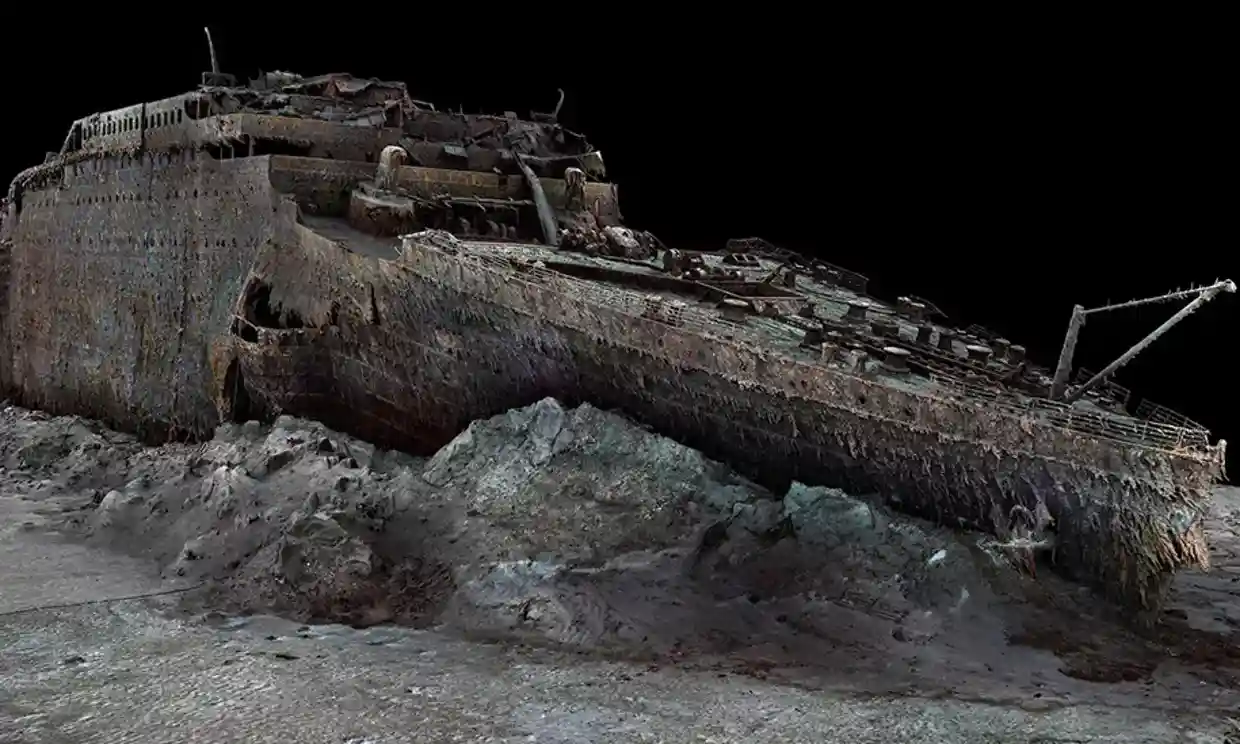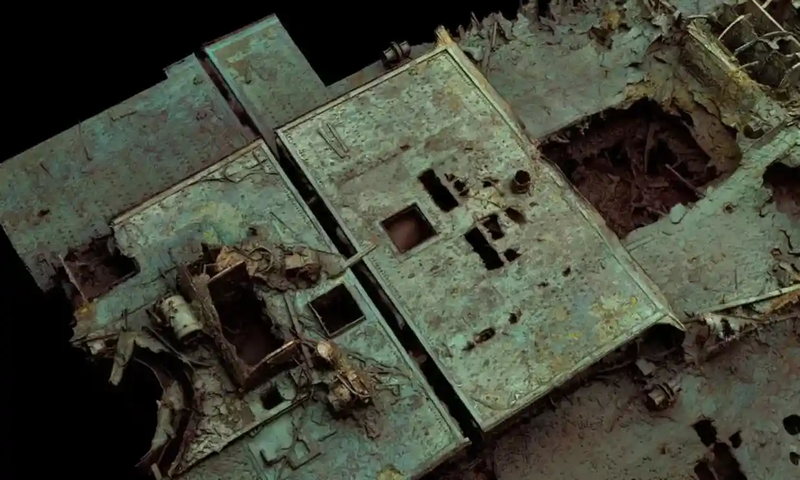‘She has stories to tell’: digital scan of Titanic wreck could reveal its secrets

‘Digital twin’ of ship created by deep-sea mapping firm may help shed new light on 1912 sinking
The Titanic has been depicted in unprecedented detail in the first full-sized digital scan of the wreck.
The unique 3D view of the entire vessel, seen as if the water has been drained away, could reveal fresh clues about how she came to sink on her maiden voyage in 1912. The scans also preserve a “digital twin” of the ship, which is rapidly being destroyed by iron-eating bacteria, salt corrosion and deep ocean currents.
Parks Stephenson, a Titanic analyst, told BBC Radio 4’s Today program on Wednesday that the images could provide new forensic evidence that could prompt a rewrite of how the sinking unfolded.
“I’ve seen enough in my years of studying the Titanic that I am suspicious of the narrative that we’ve become accustomed to over the past century,” Stephenson said.
He questions whether the Titanic hit the iceberg along the starboard side, as widely assumed. “I’m seeing a growing amount of evidence in recent years that suggests Titanic actually grounded, ran over a submerged shelf of the iceberg, which was the first scenario proposed back in April 1912,” he said.
“There is still much to learn from the wreck, which is essentially the last surviving eyewitness to the disaster,” he added. “She has stories to tell.”
The scan was carried out in summer 2022 by Magellan Ltd, a deep-sea mapping company, and Atlantic Productions, which is making a documentary about the project.
The Titanic was long assumed to have sunk in one piece, but when the wreck was discovered in 1985 it was found to have broken up before reaching the ocean floor. It lies in two main pieces about 600 meters apart, surrounded by a field of debris.

The wreck has been explored and imaged on many occasions. However, conventional cameras provide only clips or snapshots of the ship rather than recording the entire object. And time is running out to capture the wreck in detail.
The lack of light and intense pressure at a depth of nearly 2.5 miles (4km) means there is little sea life in the vicinity. But iron-eating microbes have colonized the vessel and are gradually transforming the 50,000 tonnes of iron into rusticles. These eventually dissolve into a fine powder and are carried away on ocean currents.
Scans of the wreck were carried out over a six-week expedition last summer. A specialist ship was positioned in the North Atlantic, 435 miles (700km) off the coast of Canada. The expedition deployed two submersibles – named Romeo and Juliet – which spent more than 200 hours close to the seabed, mapping every millimeter of the wreck and the 3-mile debris field in detail.
The submersibles took more than 700,000 images from every angle, creating an exact 3D reconstruction. The images show the eerily recognizable form of the vessel, covered in stalactites of rust. Strewn across the debris field are an array of objects including unopened champagne bottles, statues, and dozens of shoes.
The expedition also included a flower-laying ceremony in memory of those who lost their lives in the maritime disaster.
More than 1,500 people died when the ship, which was carrying 2,224 passengers and crew, sank. This included Capt Edward Smith, who went down with the ship, which was the largest afloat at the time and was billed as unsinkable.